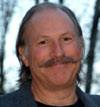So we take refuge under our beloved starry sky only to find that this “good news-bad news” motif has infected the entire universe.
November, for example, ushers in the 3-month period when nights are longest. You don’t have to wait until after dinner to roll out the scope. The bad news? In most of the country, November also kicks off the year’s most overcast season. In much of North America, cloud cover reaches its annual peak percentage then, a dreary situation that lasts until spring.
There’s an odd yin-yang quality to our entire planet, so we astronomers shouldn’t expect to be exempt. And we haven’t been. In 350 b.c. and 200 b.c., respectively, the good news (GN) was that Aristotle and Eratosthenes revealed the shape and size of Earth; but the bad news (BN) was almost nobody believed them.
GN: In 140 b.c., Claudius Ptolemy figures out the distance to the Moon.
BN: He sets back science for the next 1,500 years with his wacky Earth-centered scheme and obsession with astrology.
GN: In b.c. 1610, Galileo, while observing Jupiter’s moons, proves that Earth isn’t the center of all motion.
BN: Priests looking through his telescope insist they can’t see a thing.
GN: In the 16th century, explorers sailing under far southern skies discover myriad new stars.
BN: They saddle their new constellations with bizarre names like “The Fly” and the “The Air Pump.”
GN: In 1917, the world’s largest telescope, with a 100-inch mirror, is built.
BN: They build it in Los Angeles.
GN: In 1959, for the first time, humans successfully send a spacecraft to the far side of the Moon.
BN: Luna-3 is a Soviet craft, so a zillion new craters get unpronounceable Russian names, permanently.
Historical astro-events follow this double-edged sword theme, too. You know how rare it is to get a total solar eclipse over any big United States city. There are none between 1979 and 2017. But in a 1.5-year span in the 1920s, two of the largest cities were scheduled for totality. Many universities could afford only one research expedition, so they had to choose. Which had the best shot at clear weather: L.A. in fall, or New York in winter? A no-brainer, right? Almost everyone went to southern California with its fabled blue skies. The bad news was that La-La land was leaden September 10, 1923, while the Big Apple was cloudless January 24, 1925.
The theme continues to modern times.
GN: A fleet of reusable space shuttles is created that can carry up to seven astronauts into orbit.
BN: Two separate in-flight disasters leave the fleet grounded for years at a time.
GN: The sci-fi dream of an international space station is realized.
BN: The media and most of the public are bored with it.
GN: We find an extraterrestrial ocean that might harbor life here in our own solar system.
BN: It’s on a moon orbiting within Jupiter’s fierce radiation belts, so nobody will ever be able to go there.
For a change, let’s reverse the order.
BN: In 1915, Einstein blemishes his wonderful general relativity theory by tacking on a cheesy ad hoc “cosmological constant.” Later, he slaps his head and calls it his worst blunder.
GN: In 2002, cosmologists decide this “blunder” might be valid after all. Maybe.
It would be nice if this good news-bad news business proves to be just a temporary fashion, like bell bottoms and suspenders were. But theorists’ models for planetary and stellar evolution suggest it will go on forever.
Someday, the Moon will stop its current inch-a-year departure from us and reverse direction. It will approach Earth until tidal forces break our nearest neighbor into a trillion pieces, forming a glorious ring to rival Saturn’s. Will future humans — evolved to where they lack toes but can wiggle their ears — regard that as good news? Or, will it be bad news for clammers (tides will fall to three-eighths of what they are now) and astronomers?
This whole topic is getting played out.
BN: Inertia makes it hard to stop, and the writer doesn’t seem to know when enough is enough.
GN: We’re out of room.










